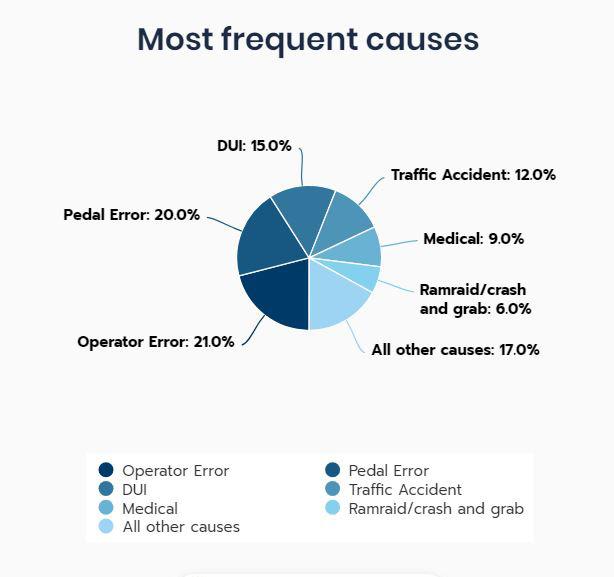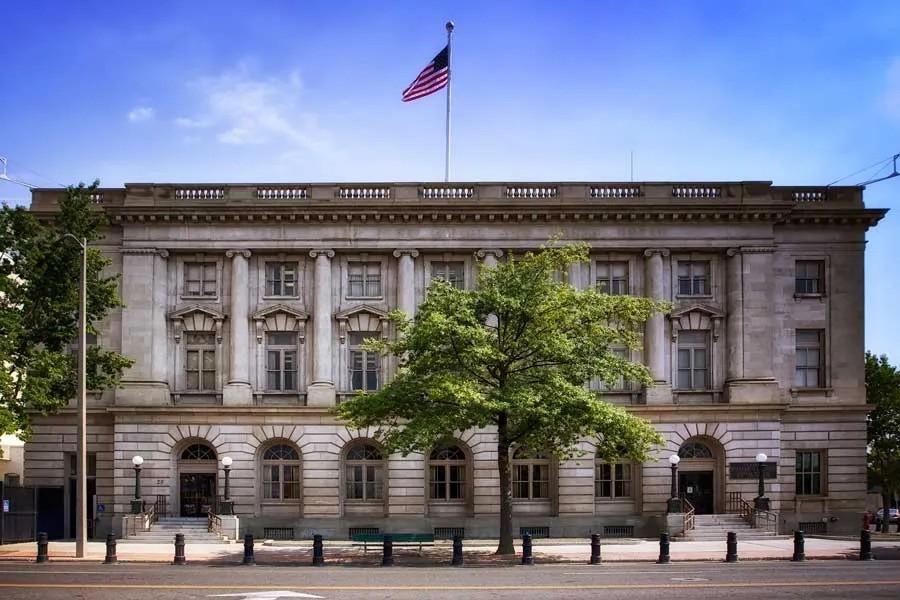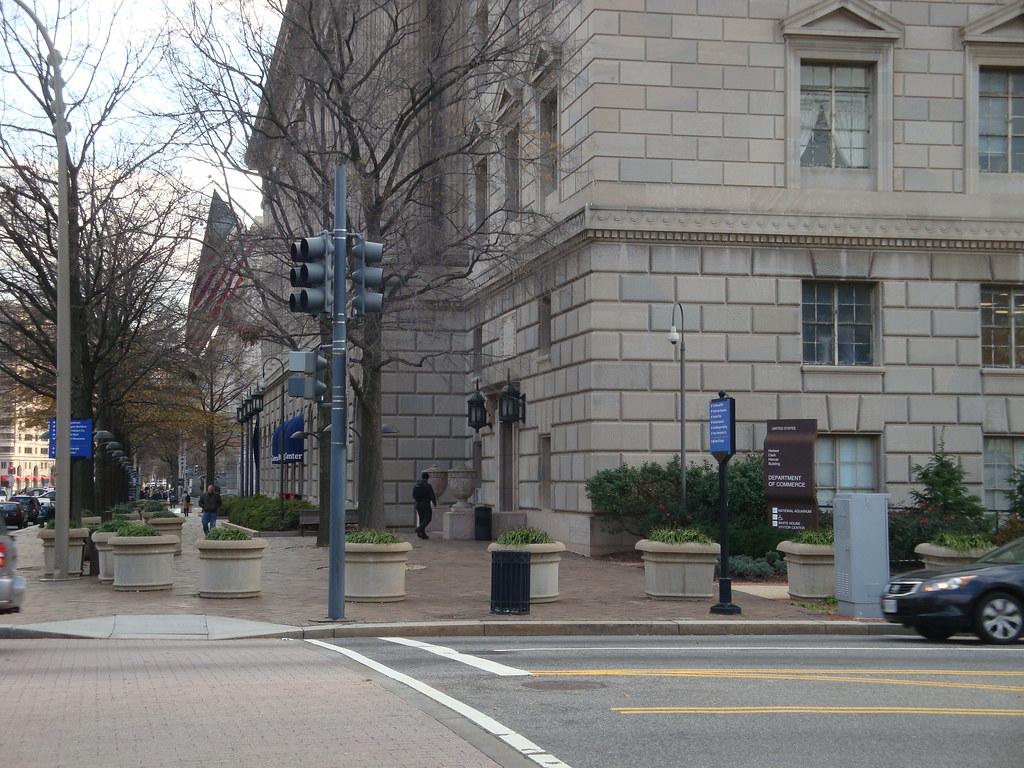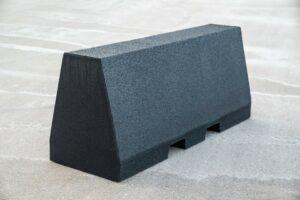The world is a dangerous place, and recent news reports have emphasized the importance of perimeter security measures in keeping people, places, and communities safe. Solutions like concrete barriers, security planters, and bollards can enhance your multi-stage security strategies for maximum protection.
Unfortunately, vehicular attacks are an ever-increasing danger. According to the Storefront Safety Council, the United States sees vehicles crash into buildings and structures more than 100 times per day. These incidents account for more than 1,600 people injured annually and 2,600 deaths per year. Just this year, a driver carried out a terrorist attack by driving a truck into New Year’s Day celebrations on Bourbon Street in New Orleans, killing 15 people. Devastating tragedies such as these inflict a terrible toll on communities, threatening their physical and mental safety.

Not all vehicular incidents are intentional acts of violence. Storefront Safety Council data indicates that operator error and pedal error (accidentally stepping on the gas pedal instead of the brake) account for many vehicular incidents. However, DUIs and medical emergencies, distracted driving, speeding or reckless driving, and poor parking design (which can cause vehicles to roll into nearby structures) are other common causes. Fortunately, robust security strategies that utilize multi-layered solutions can mitigate the damage of these incidents and even prevent or deter future attacks.
Bollards As Barriers
Bollards are short posts installed in sidewalks, parking lots, or around buildings that provide a permeable barrier for pedestrians while inhibiting vehicular access. Much like concrete Jersey barriers, bollards are made of strong materials like steel and concrete and are anchored into the ground, which helps them absorb and disperse kinetic energy when hit. These strong materials not only stop vehicles from advancing, but they minimize shrapnel during impact.
Thinking Beyond Bollards
If you are looking to implement bollards in your security strategy, don’t let the planning and installation time leave you vulnerable to attack. Tragically, in the recent New Orleans attack, Bourbon Street’s security bollards were under repair, leaving the pedestrian-filled neighborhood vulnerable to vehicular entry. Not only does this kind of oversight lead to a horrific loss of life, but cities and businesses could bear legal responsibility for any injuries.

Installing bollards can sometimes be a lengthy process. As with any project, they require a site assessment, and placement must comply with relevant codes and regulations. Crash-rated and automatic bollards require a lot of groundwork for necessary reinforcements, anchors, and electricity. Some crash-rated bollards even utilize an interconnected underground beam system to provide further stability. No matter the type of bollards you are using, they occasionally require routine inspections, lubrication, cleaning, and repair, which can put them out of service.
These various processes can leave you open to threat if you have no barriers in place. Jersey barriers, steel-reinforced concrete planters, or decorative barriers can be quickly deployed to form a temporary perimeter. Because of cost-effective options like renting or reselling barriers, these solutions can keep your communities safe and protect you from litigation while your more permanent solutions are installed or maintained.

Multi-Stage Barrier Strategies
As with any good safety strategy, layering is key. Multiple levels of security can cover any gaps or weaknesses in other layers. For example, having a “soft perimeter” of trees or landscape leading up to your bollards creates obstacles that impede oncoming threats before they even approach your first level of defense. Similarly, shorter side streets or speed bumps can also help slow oncoming vehicles. Should a vehicle encroach your initial level, security planters or other concrete barriers behind a row of bollards can further impede progress. And finally, a hard perimeter of Jersey barriers or crash-rated bollards closest to your building or protected space provide the ultimate final layer of protection.
As with any barrier placement, proper planning is key. In addition to building in layers of protection, spacing is crucial to the success of your strategy. Permeable barriers such as bollards or planters must be placed at least 3 feet apart to allow for wheelchair and motorized chair access, per the ADA. However, if they are serving as a vehicular barrier, they cannot be more than 5 feet apart. Often, staggering layers of barriers maintain pedestrian access while making your perimeter more effective against vehicles. Crash-rated bollards and concrete barriers have measurements that tell you how far a vehicle will travel when it impacts your barrier. Use these measurements to ensure no buildings or people are in harm’s way during a collision.

360-Degree Security
Whether you’re considering bollards, concrete barriers, or planters in your planning, consider your holistic security strategy. Crime Prevention Through Environmental Design (CPTED) is a multi-disciplinary approach to reducing crime by using architecture, urban planning, and facility management. In a CPTED approach to perimeter security, objects like security planters, softscape, and hardscape not only serve a security purpose, but also enhance the aesthetics and usability of these spaces. Planters filled with vibrant greenery create an inviting and healthful space for pedestrians, but they also draw the eye of drivers. These “visual speed bumps” pop in and out of drivers’ sightlines, encouraging them to slow down and adding another layer of protection. Even bollards and concrete barriers equipped with reflective tapes, lighting, and signage serve double-duty in increasing visibility and protecting safety.
Safety-conscious design extends beyond perimeter security. Traffic calming efforts like speed bumps or pedestrian crosswalks lower risks of impacts. Design strategies like buffer zones, water features, or landscaping between pedestrian areas and high-traffic zones are natural safety tactics. Additional surveillance technology like security cameras and emergency alert systems can enhance your overall strategy. Even holistic practices like emergency preparedness, community engagement and awareness, and regulatory support can broaden the safety net around your properties and communities and maximize the effectiveness of your security approach.
—
No matter the size or complexity of your project, security should never be overlooked. Fortunately, durable concrete products offer flexible, reliable, and secure solutions to fortify your perimeters without sacrificing ease, cost, or aesthetics. With steel-reinforced security planters, decorative barriers, and new or used Jersey barriers, 48 Barriers has secure solutions for any need. Contact us today for your quick quote.



